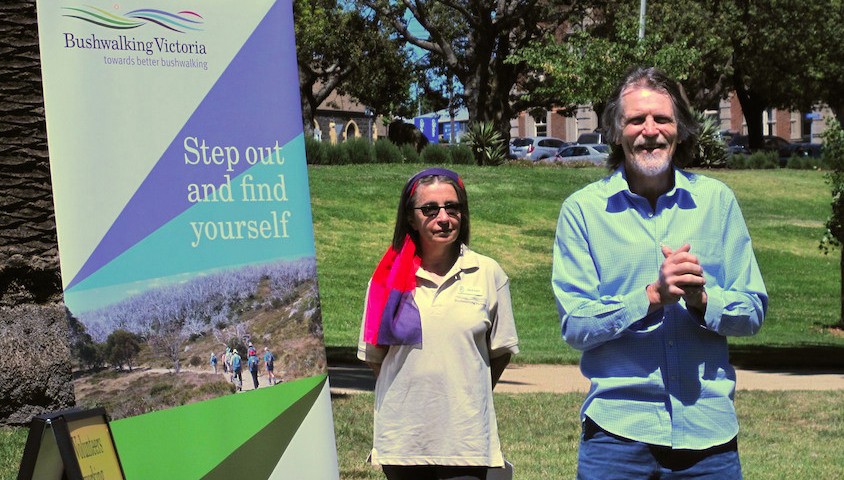A new brochure produced by Bushwalking Victoria is designed to encourage a conservationist approach to bushwalking in Australia’s wilderness places.
The document, entitled Tread Softly, was launched on the 3rd of December and lists 10 recommended practices that help minimise bushwalker impact without taking away from their enjoyment of the activity.
Each practice is explained as a straightforward action that bushwalkers should find are relatively common sense – many are likely to already undertake most, if not all, of these activities anyway.
For this reason, Bushwalking Victoria says the document isn’t just aimed at people who identify as bushwalkers, but to all people who walk in protected areas.
“Bushwalking is the primary active recreation of 200,000 Victorians,” said Bushwalking Victoria board member, Joslin Guest. “53,000 Victorians four-wheel drive in the bush for recreation. 24,000 Victorians hunt and shoot. Hundreds of thousands of Victorians, interstate and overseas tourists visit Victoria’s internationally acclaimed national parks.
“All of these people, even if they wouldn’t dream of calling themselves bushwalkers, walk in the bush,” she said.
The new code was launched alongside the Geelong Bushwalking Club’s new edition of Walking the Otways at an event in Johnstone Park, Geelong, which was attended by members of Geelong Bushwalking Club and Bushwalking Victoria, local councillors and Parks Victoria staff, with appearances from both John and Monica Chapman.
John Chapman, who has an active involvement with both Geelong Bushwalking Club and Bushwalking Victoria, said that the initiative is similar to one that was launched a decade ago, called ‘Minimum Impact Bushwalking’.
“Education and campaigns like these make bush users more aware of how to enjoy nature in a more sensitive manner,” Chapman said. “In the past, escaped campfires have been a big issue, particularly when they happen in environmentally-sensitive areas, such as a fire that burnt out parts of Mount Olympus in Tasmania.
“Another problem is water pollution, as much of our water is still potable while in places like California’s Sierra Ranges, where there are no backcountry toilets, you have to treat all water as many streams are infected with giardia.”
Chapman also acknowledged the effectiveness of previous campaigns in some areas, while other issues are becoming more prevalent.
“In the 1980s all the vegetation around popular, elevated campsites in Tasmania was disappearing as a result of campfires. Now that these have been banned and bushwalkers are much more fire conscious, that vegetation has returned, providing much-needed shelter.”
“Meanwhile problems that have been increasing recently are things like the spread of weeds and pathogens, like phytopthera – hence why we’ve included biosecurity in the new Tread Softly document.”
10 Tread Softly Actions:
- Small group sizes
- Stay on established tracks
- Use existing campsites
- Use a stove for cooking
- Take care with campfires
- Protect water sources
- Bury toilet waste
- Carry out all rubbish
- Respect flora and fauna
- Comply with biosecurity measures
The full brochure with additional details on each action can be found via the Bushwalking Victoria website.


